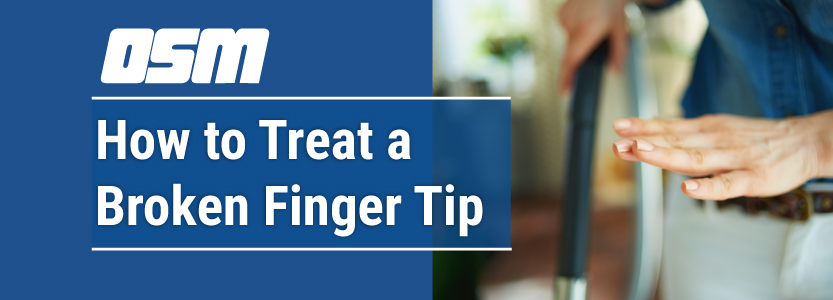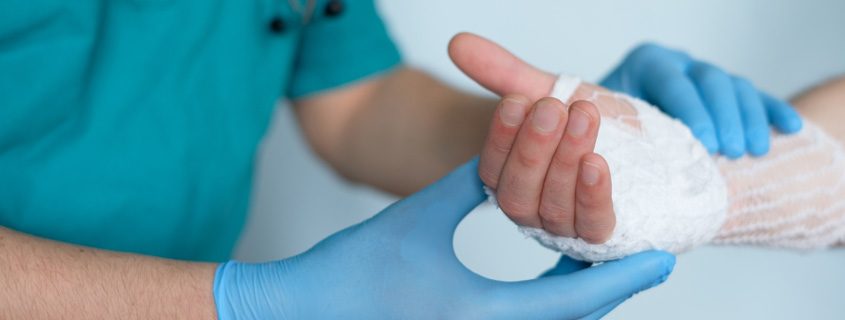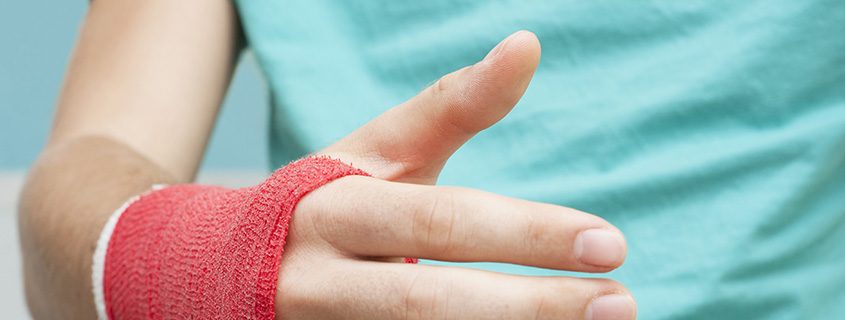How to Treat a Broken Finger Tip
Article featured on American Society for Hand Surgery
The finger tip is one of the most commonly injured areas of the upper extremity because we use our finger tips in so many daily activities. Your finger tip can be injured in a variety of different ways, including being crushed by a door, hit with a hammer, getting stuck under a heavy object, or cut with a knife.
While some finger tip injuries may be minor, others can be more severe. You can the bone, nail bed, tendons or even the nerve endings, which allow you to have sensation in the finger tips. Here’s how to treat a finger tip injury, depending on the severity:
- Dressing (a gauze wrapping or tape): Dressings can treat more minor finger tip injuries, such as when just the skin is affected or if there is a small amount of bone exposed.
- Splints or metal pins: These can be used if you’re suffering from a broken finger tip. The metal pins will hold the bone fragments in the proper position.
- Drainage: If blood is collecting under your nail, your hand specialist may make a small hole in the nail to drain it.
- Surgery or amputation: These treatment options are reserved for more severe nail bed injuries.
Regardless of which treatment you receive, it’s important to remember that your finger tip may never look or feel the same after an injury, especially a severe one.
Your treatment plan will vary based on your specific circumstances. Visit a hand specialist as soon as you’ve injured your finger tip to determine the best plan. The sooner you receive treatment, the better. Delaying treatment may result in loss of feeling in your finger tip.
The Orthopedic & Sports Medicine Center of Oregon is an award-winning, board-certified orthopedic group located in downtown Portland Oregon. We utilize both surgical and nonsurgical means to treat musculoskeletal trauma, spine diseases, sports injuries, degenerative diseases, infections, tumors and congenital disorders.
Our mission is to return our patients back to pain-free mobility and full strength as quickly and painlessly as possible using both surgical and non-surgical orthopedic procedures.
Our expert physicians provide leading-edge, comprehensive care in the diagnosis and treatment of orthopedic conditions, including total joint replacement and sports medicine. We apply the latest state-of-the-art techniques in order to return our patients to their active lifestyle.
If you’re looking for compassionate, expert orthopedic surgeons in Portland Oregon, contact OSM today.
Phone:
503-224-8399
Address
1515 NW 18th Ave, 3rd Floor
Portland, OR 97209
Hours
Monday–Friday
8:00am – 4:30pm



